Reindeer
- December 28, 2023
- 0 comment
Reindeer, also known as caribou in North America, are captivating creatures that hold a special place in popular culture, especially during the festive season. Identified by their distinctive antlers, both males and females boast these impressive appendages, with the former sporting larger and more intricate designs. Reindeer are characterized by their compact bodies, sturdy legs, and thick fur, which adapts to the harsh climates they inhabit. Their fur coloration varies, ranging from dark brown to beige, providing effective camouflage in their natural habitats.

These resilient creatures are found in a vast species range, spanning across the Arctic tundra, subarctic regions, and mountainous areas. In North America, caribou traverse the boreal forests and alpine tundra. Their nomadic lifestyle involves seasonal migrations, covering extensive distances in search of food sources. This adaptability to diverse environments has allowed reindeer to thrive in some of the world’s most challenging landscapes.
In terms of health and safety concerns, reindeer populations face various challenges. Climate change poses a significant threat, affecting the availability of their primary food sources, such as lichens and mosses. Additionally, diseases transmitted by domesticated animals, habitat degradation, and human encroachment further compound the challenges for reindeer herds. Conservation efforts and sustainable management practices are crucial to ensuring the continued well-being of these iconic animals, balancing their ecological role and cultural significance with the need for responsible stewardship of their habitats.
| Aspect | Description |
|---|---|
| Scientific Name | Rangifer tarandus |
| Common Names | Reindeer (Eurasia), Caribou (North America) |
| Body Length | 1.6 to 2.2 meters (varies between males and females) |
| Shoulder Height | 0.9 to 1.5 meters |
| Weight | 60 to 318 kg (males are generally larger than females) |
| Antlers | Present in both males and females; larger in males |
| Antler Size | Can reach up to 1.2 meters in width |
| Coat Color | Varied, ranging from dark brown to beige |
| Habitat | Arctic tundra, subarctic regions, boreal forests, alpine tundra |
| Range | Circumpolar regions in North America, Europe, Asia |
| Lifespan | 12 to 15 years in the wild |
| Diet | Herbivores, primarily feeding on lichens, mosses, and vegetation |
| Mating Season | September to November (varies by subspecies) |
| Gestation Period | About 230 days |
| Predators | Wolves, bears, and humans |
| Conservation Status | Varies by subspecies; some are considered vulnerable or endangered |
| Challenges | Climate change, habitat loss, disease transmission, overgrazing |
The Enchanting World of Reindeer

General Biology
Reindeer, scientifically known as Rangifer tarandus, are enchanted with their unique biology. These captivating creatures exhibit sexual dimorphism in their antlers, with males showcasing larger and more intricate structures than their female counterparts. Their sturdy bodies, adapted for the harsh Arctic climates, are covered in thick fur, ranging in color from dark brown to beige. The compact build and strong legs allow reindeer to navigate the challenging terrains of their vast habitats.
Reproduction
The annual spectacle of reindeer mating, known as the rut, unfolds in the autumn months. During this time, males engage in fierce antler displays to establish dominance and win mating rights. Females give birth to a single calf after a gestation period of about 230 days. The calving season typically occurs in late spring or early summer, ensuring the young have ample time to strengthen before facing the harsh winter.

Behavior
Renowned for their nomadic lifestyle, reindeer embark on remarkable seasonal migrations in search of food sources. Their herding behavior protects predators like wolves and bears. Social bonds within the herd are strong, fostering cooperation during migration and ensuring the well-being of the group.
Nesting/Denning Cover
Reindeer, adapted to the Arctic environment, do not build nests or dens like some other mammals. Instead, they rely on their thick fur and huddle together for warmth during extreme weather conditions. The collective body heat generated by the herd offers effective insulation against the biting cold.
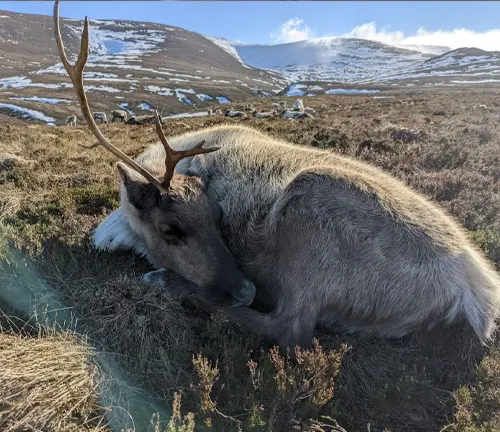
Habitat
Reindeer thrive in a diverse range of habitats, including the Arctic tundra, subarctic regions, boreal forests, and alpine tundra. Their adaptability allows them to traverse these challenging landscapes, undertaking extensive migrations to find adequate food sources throughout the year.
Food Habits
As herbivores, reindeer have a diverse diet, feeding on lichens, mosses, and various vegetation. Their specialized hooves adapt to different terrains, enabling them to uncover food beneath the snow during winter. This diet, rich in nutrients, sustains them through the demanding conditions of their habitats.
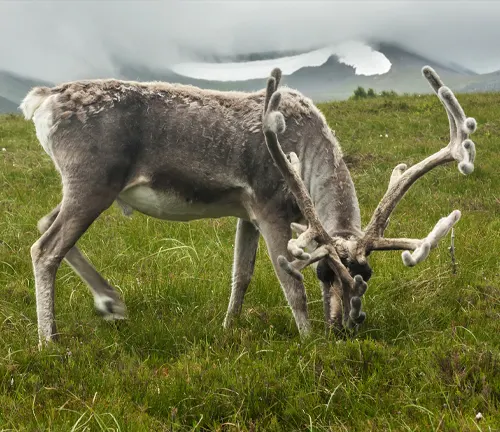
Voice, Sounds, Tracks, and Signs
Reindeer communicate through a range of vocalizations, including grunts, snorts, and barks, especially during the rut. These sounds play a crucial role in maintaining social cohesion within the herd. Additionally, reindeer leave tracks and signs in the snow, offering insights into their movements and behaviors. The intricate patterns of their hoof prints tell a story of their journeys across the Arctic landscape.
Navigating the Impact: Reindeer-Induced Damage
Damage Identification
Reindeer, with their picturesque charm, can inadvertently bring about various forms of damage. Identifying the signs of reindeer-induced impact is crucial for understanding their ecological interactions. Tracks, browse lines, and soil disturbance serve as key indicators of their presence, aiding researchers and land managers in comprehending the extent of their influence on the environment.
Damage to Landscapes
The enchanting landscapes where reindeer roam are not immune to their influence. Overgrazing of vegetation, particularly in sensitive Arctic ecosystems, can lead to soil erosion and habitat degradation. Understanding the delicate balance between the reindeer population and their surroundings is essential for preserving the unique flora and fauna of these diverse environments.
Damage to Crops and Livestock
While traditionally associated with wilderness, reindeer herds can encroach on agricultural areas, posing challenges for crop cultivation and livestock management. Crop damage from foraging reindeer can impact livelihoods, prompting the need for sustainable coexistence strategies that protect both agricultural interests and the natural behaviors of these iconic creatures.
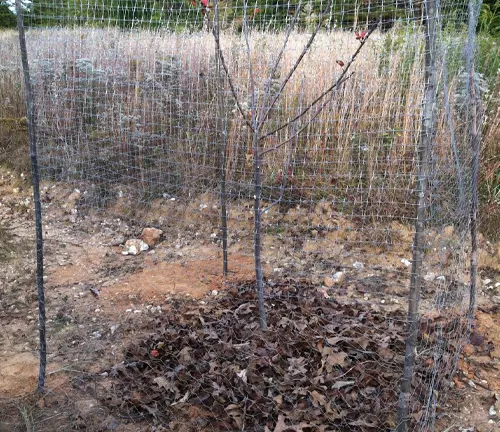
Damage to Structures
The built environment is not exempt from the influence of wandering reindeer. Urban and suburban areas near reindeer habitats may experience structural damage as these animals navigate through human landscapes. From collisions with vehicles to the wear and tear on fences, addressing the impact on infrastructure becomes imperative for fostering harmony between human settlements and reindeer territories.
Strategies for Damage Prevention and Control
Damage Prevention and Control Methods
As human settlements expand and intertwine with reindeer habitats, the need for effective damage prevention and control methods becomes paramount. This article explores various strategies employed to manage the interactions between reindeer and the built environment, ensuring the coexistence of these magnificent creatures and human activities.
Habitat Modification
One approach to minimizing reindeer-induced damage involves modifying their natural habitats. This might include adjusting vegetation patterns or introducing barriers to guide the herds away from sensitive areas. Balancing the needs of reindeer with the preservation of ecosystems requires thoughtful habitat modification strategies that account for the intricate relationship between these animals and their environment.
Exclusion
Creating physical barriers to prevent reindeer access to specific areas is a common method of damage control. Fencing and other exclusionary measures aim to protect crops, landscapes, and structures from the potential impact of foraging reindeer. Striking the right balance between protective measures and allowing reindeer to maintain their natural behaviors is crucial for successful implementation.
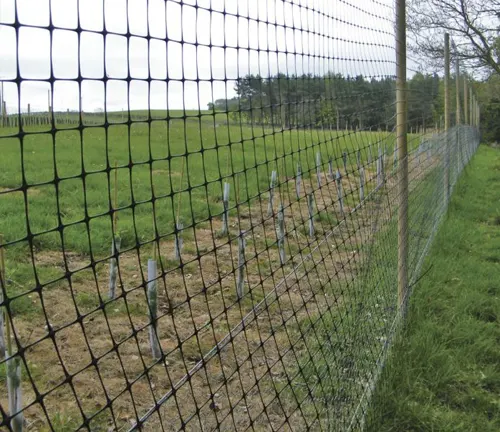
Frightening Devices
Incorporating frightening devices into the landscape can deter reindeer from venturing into problematic areas. These devices may include sound or light-based deterrents designed to startle and redirect the herds. Understanding the behavioral responses of reindeer is key to the effective deployment of frightening devices as part of a comprehensive damage prevention strategy.
Repellents
The use of repellents offers an additional layer of defense against unwanted reindeer interactions. These substances, whether chemical or natural, aim to discourage reindeer from approaching specific locations. Evaluating the efficacy of repellents and considering their environmental impact are crucial aspects of integrating these measures into a broader management plan.
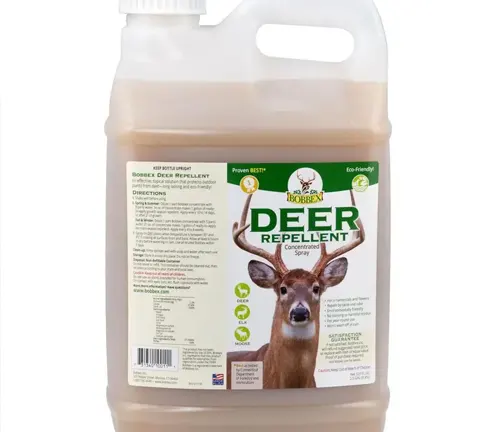
Toxicants
While a more controversial approach, the use of toxicants may be considered in extreme cases where other methods prove ineffective. Careful consideration of the ecological consequences and adherence to ethical standards are essential when contemplating the use of toxic substances as a means of reindeer control.
Shooting
In situations where lethal control is deemed necessary, shooting may be employed under regulated and ethical conditions. This method requires a deep understanding of reindeer behavior, precise marksmanship, and adherence to legal and ethical guidelines. Responsible use of firearms aims to mitigate specific challenges posed by reindeer in defined scenarios.
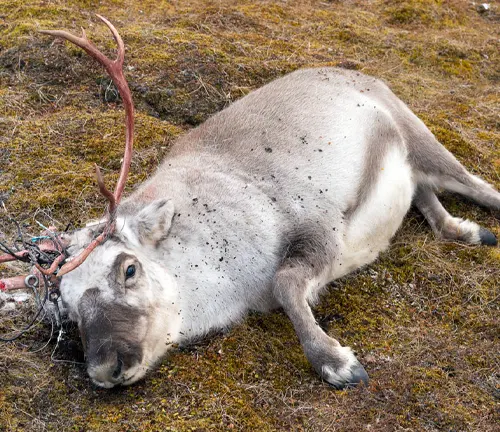
Trapping
Trapping is another method used for selective control of reindeer populations. This approach requires careful planning and execution to minimize stress on the animals and ensure ethical treatment. Trapping can be part of a comprehensive wildlife management plan, particularly in areas where other methods may be impractical or less effective.
Different Species
Woodland Caribou
(Rangifer tarandus caribou)
Found in boreal and mountainous regions, woodland caribou are known for their adaptation to forested environments. They have relatively large, palmate antlers and a reddish-brown coat.
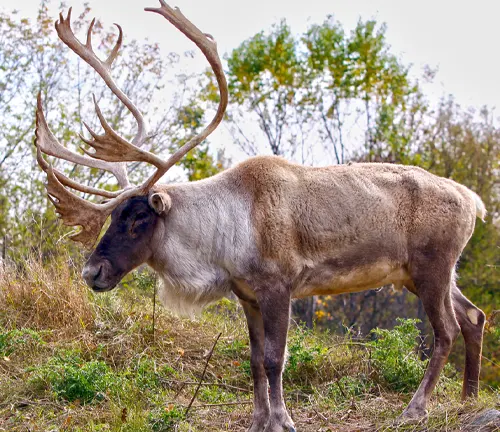
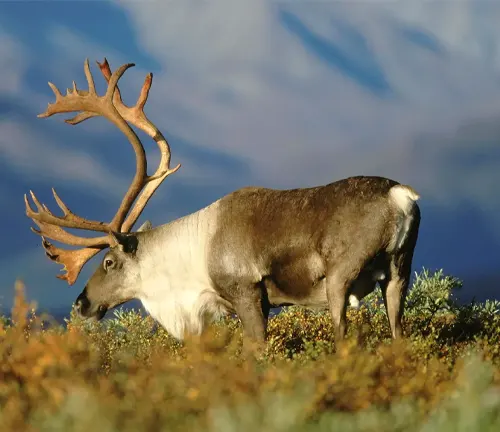
Barren-Ground Caribou
(Rangifer tarandus groenlandicus)
Inhabiting the Arctic tundra and barren grounds, this subspecies undergoes extensive migrations in search of food. They have smaller antlers and a lighter coat compared to other subspecies.
Mountain Caribou
(Rangifer tarandus montanus)
Thriving in mountainous regions, mountain caribou are adapted to rugged terrains. They have specialized hooves for traversing steep slopes and rocky landscapes.

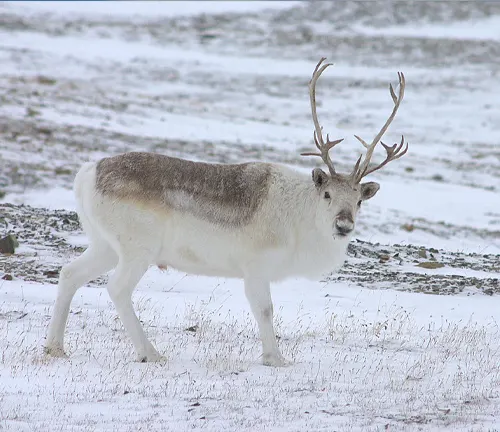
Peary Caribou
(Rangifer tarandus pearyi)
Found in the Canadian Arctic Archipelago, Peary caribou are known for their smaller size and lighter coloration. They have adapted to the harsh Arctic conditions of their habitat.
Svalbard Reindeer
(Rangifer tarandus platyrhynchus)
Native to the Svalbard archipelago in the Arctic Ocean, these reindeer are relatively small and have adapted to the challenging Arctic climate of the region.
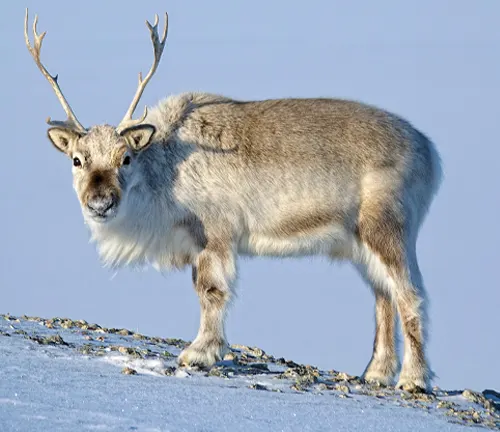
Frequently Asked Questions (FAQs)
1. What is the difference between reindeer and caribou?
While “reindeer” and “caribou” refer to the same species, the names are often used based on geographic locations. In Europe and Asia, they are generally referred to as reindeer, whereas in North America, they are commonly called caribou.
2. Do both male and female reindeer have antlers?
Yes, both male and female reindeer grow antlers. However, males typically have larger and more elaborate antlers, and they often retain them longer into the winter.
3. Why do reindeer migrate?
Reindeer migrate seasonally in search of food. Their nomadic lifestyle allows them to follow the availability of vegetation, such as lichens and mosses, which form a significant part of their diet.
4. How long is the gestation period for reindeer?
The gestation period for reindeer is approximately 230 days. Calving usually occurs in late spring or early summer, allowing the young to gain strength before facing the challenges of winter.
5. What is the lifespan of a reindeer in the wild?
In the wild, reindeer typically live to be around 12 to 15 years old. However, factors such as predation, disease, and environmental conditions can influence their lifespan.
6. How do reindeer adapt to harsh Arctic environments?
Reindeer have several adaptations for survival in cold climates, including a thick fur coat, specialized hooves for digging through snow to find food, and a high metabolic rate that helps generate body heat.
7. Are reindeer domesticated?
Yes, reindeer have been domesticated by various indigenous peoples for centuries. They are used for transportation, herding, and as a source of meat, milk, and hides.
8. Are there any conservation concerns for reindeer populations?
Yes, some subspecies of reindeer, particularly certain caribou populations, face conservation challenges. These may include habitat loss, climate change affecting food sources, and disruptions caused by human activities.
9. Can reindeer fly like Santa’s reindeer in folklore?
No, in reality, reindeer cannot fly. The concept of flying reindeer is a part of folklore and is famously associated with Santa Claus and Christmas traditions.
10. Are there any cultural significance or myths associated with reindeer?
Reindeer hold cultural significance for many indigenous peoples, and they are featured in various myths and folklore. In some cultures, they are considered symbols of endurance, adaptability, and the spirit of the northern wilderness.


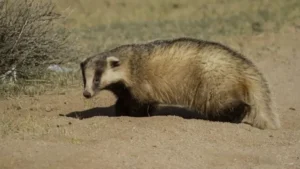




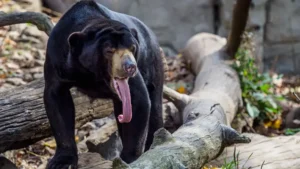


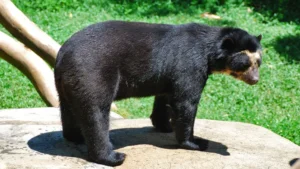

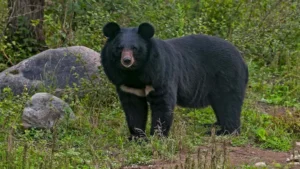
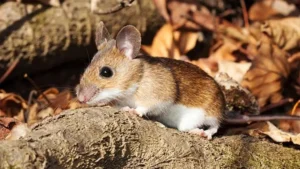
Leave your comment